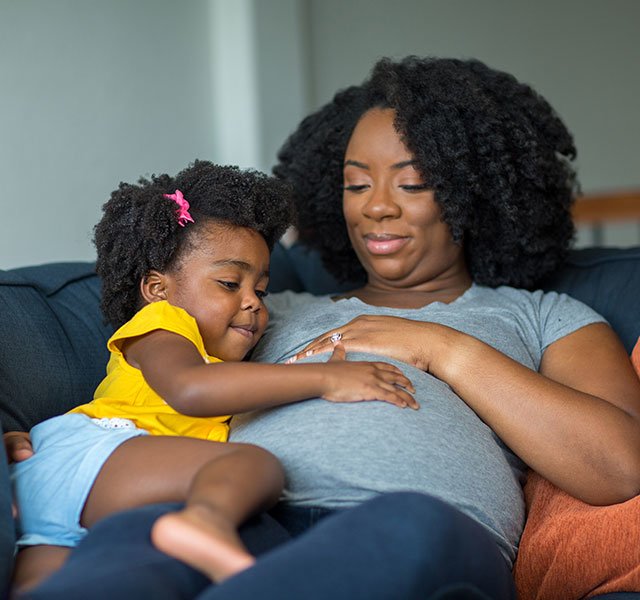Deciding how to best deliver your baby after a previous cesarean section (C-section) can be complicated. Many women think a repeat cesarean is the only option available to them.
"The reality is, women who have had a previous cesarean birth may be candidates for a vaginal delivery depending on a variety of factors, including their age, health status, and most important, the reason for their previous cesarean deliveries," says Melodee Babcock, CNM, a certified nurse midwife at Henry Ford Health.
Trial of Labor Explained
Historically, women who became pregnant after a cesarean delivery automatically had repeat C-sections with any future children. In recent years that paradigm has shifted. Health authorities including the American College of Obstetrics and Gynecology now say women with a previous cesarean should have the option to deliver their babies vaginally.
Called "trial of labor after cesarean (TOLAC)," this approach comes with several benefits, including:
- Faster recovery times
- Fewer risks for future pregnancies and births
- Reduced risk of infection
- Reduced need for medical intervention
- Enhanced mom-baby bonding
Unfortunately, not all women are candidates. A successful vaginal birth after cesarean (VBAC) depends on a variety of factors, including the length of time since the woman's last cesarean. "Ideally, a woman should have at least 19 months between deliveries," Babcock says. "After that, the cesarean scar is more likely to have healed completely."
Dispelling VBAC Myths
Despite the recommendation that women who have had a prior cesarean be offered a TOLAC, the cesarean rate continues to climb. "There are a lot of misconceptions about VBACs," Babcock says. Among the most common:
Myth: If you've had a cesarean, a second cesarean is the only option.
The truth is, TOLAC is a safe and reasonable option for many women — even those who have had more than one cesarean birth. "The likelihood of a successful VBAC is similar between a birthing person with one previous incision and a birthing person who has had more than one cesarean," Babcock says.
Myth: There's a high risk of uterine rupture for women attempting vaginal delivery after a cesarean.
Actually, the risk of uterine rupture after one cesarean (with a low-cut, horizontal incision) is less than 1%, depending on a woman's other risk factors. The risk of rupture increases for women who had a cesarean delivery with a vertical incision falls somewhere between 1 and 7%.
Myth: You can't have a VBAC if you're pregnant with twins.
Women who are pregnant with twins have about the same (low) risk of uterine rupture as those who are carrying singletons. As long as the scar is low and horizontal, and there are no other risk factors, a trial of labor is a perfectly reasonable option for moms who are expecting twins.
Myth: If you choose a VBAC, your only care option is an obstetrician.
Some women mistakenly believe that obstetrician-led care is the only option for women who want a VBAC. In fact, certified nurse midwives can also oversee VBAC births. The key is ensuring labor takes place in a facility that's equipped to address complications if they arise.
Myth: The risks of a repeat cesarean are lower than the risks of a VBAC.
"Elective cesarean deliveries after a previous cesarean also come with risks," Babcock says. "The more cesareans you have, the greater your risk of complications." These complications include placental abnormalities, such as placenta accreta, where the placenta implants abnormally in the uterus. The maternal death rate is also higher among women who have an elective repeat cesarean compared to those who deliver vaginally after a previous cesarean.
Safe Delivery After C-Section
There are risks and benefits to both VBAC and an elective repeat cesarean delivery. So the decision about whether or not to try to labor naturally after a previous cesarean delivery is a uniquely personal.
"Some women feel strongly about being able to birth naturally," Babcock says. "In addition to the physical and health benefits of a vaginal delivery, there's an emotional significance for these women." In those cases, a trial of labor makes sense.
But not all women are candidates for a VBAC. In fact, doctors and midwives recommend repeat cesareans to women who have placental issues, a previous uterine rupture or a classical (vertical) cesarean scar.
Before you decide on a VBAC, it's important to consider which type of incision you have, as well as your other unique risk factors like age, pregnancy complications and overall health status.
To find a doctor or certified nurse midwife at Henry Ford, visit henryford.com or call 1-800-HENRYFORD (436-7936). Get answers to frequently asked questions about COVID-19 and pregnancy.
Melodee Babcock, CNM, is a certified nurse midwife, seeing patients at Henry Ford Medical Center – Livonia and Henry Ford West Bloomfield Hospital.



